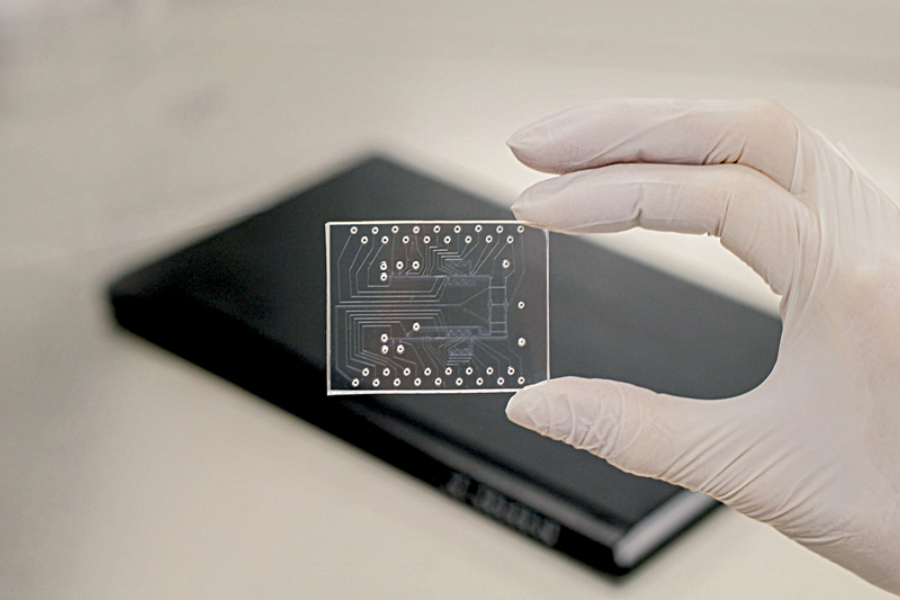MEMS and Microfluidics Reshaping the Landscape of Cancer Diagnostics
We take a deep dive into the innovative combination of Micro-Electro-Mechanical Systems (MEMS) and Microfluidics as we set off on a journey into the cutting edge of medical technology. We discover the enormous potential these technologies hold to completely transform the field of cancer detection as we investigate this microscopic marvel. The combination of MEMS and Microfluidics is not only a scientific breakthrough, but also a ray of hope in the battle against cancer, offering individualized medication and early detection capabilities.
The Unseen World of MEMS: A Glimpse into Microscopic Engineering
The unsung heroes of little engineering are Micro-Electro-Mechanical Systems, or MEMS. On a minuscule scale, these devices—which are frequently smaller than grains of sand—smoothly incorporate mechanical parts, sensors, and electronics. MEMS serve as tiny detectives in the field of cancer diagnostics, able to identify minute irregularities and biomarkers that may indicate the existence of cancer cells.
These little wonders work by combining electronics and mechanics to do complex tasks like detecting changes in their surroundings and taking precise action in response. MEMS are essential to the development of sensors in cancer diagnostics that can recognize particular biomarkers linked to various cancer kinds. This degree of accuracy is critical for the early identification of cancer since even minute changes from normal cellular activity can be signs of disease.
Microfluidics Unveiled: Crafting Channels for Breakthrough Diagnostics
In this tale, microfluidics, which deals with managing tiny fluid quantities in microscale channels, is a comparable protagonist. These channels, which are expertly designed to mimic the complexities of the human body, offer a platform for groundbreaking advancements in cancer diagnosis. The advent of microfluidic devices, which provide a dynamic platform for sample preparation, analysis, and the identification of elusive circulating tumor cells (CTCs) from blood, has ushered in a new era in non-invasive early cancer diagnosis.
Within a network of chambers, valves, and channels that resemble a maze, fluids move and interact on a minuscule scale in the discipline of microfluidics. Scientists and medical experts may study biological processes with a level of precision never seen in their research previously thanks to these instruments, which are designed to replicate the physiological circumstances seen in the human body. In the context of cancer diagnosis, microfluidics makes it possible to manipulate minuscule fluid samples, allowing for the collection and examination of rare cancer cells circulating in the blood. This discovery offers a less invasive alternative to traditional biopsy techniques, which makes it particularly significant for early cancer identification.
Illuminating Shadows: Early Detection as a Game-Changer
Timing is crucial when it comes to cancer treatment. Early detection not only increases the chances of successful treatment, but it also paves the way for less intrusive and more efficient operations. MEMS and Microfluidics work together to create diagnostic tools that detect cancer early on, often before symptoms manifest. These technologies let doctors make personalized treatment plans and respond quickly by identifying circulating tumor cells and specific biomarkers in blood samples.
In the battle against cancer, early detection has long been considered the key to success. Early detection of cancer not only improves the chance of a successful course of therapy but also makes more conservative and focused therapeutic measures possible. With the use of MEMS and microfluidics, we can now identify even the smallest molecular indications of cancer, which moves us one step closer to our objective. Microfluidic devices, for instance, have the ability to separate and examine circulating tumor cells, providing important information about the existence and development of cancer in its early stages.
Lab-on-a-Chip: Shaping the Future of Diagnostics
MEMS and microfluidics come together to form the powerful concept of “Lab-on-a-Chip.” These little labs fundamentally redefine diagnostic methods by providing compact, cost-effective, and efficient solutions. In the context of cancer diagnosis, Lab-on-a-Chip equipment allow for rapid and precise biological sample analysis, reducing testing time and expenses.
The conventional diagnostic laboratory is getting smaller, but it’s also getting more powerful. Lab-on-a-chip systems, as the name suggests, combine every function of an entire laboratory onto a single, tiny chip. This innovation is particularly useful for cancer diagnosis, as timely results are crucial in determining the most effective course of treatment. Lab-on-a-chip technologies are valuable instruments for researchers and clinicians alike because of their unmatched speed and accuracy in processing and interpreting biological data.
Personalized Medicine: Tailoring Treatments with Surgical Precision
Cancer is a complex, multifaceted disease with distinct features that requires tailored treatment. MEMS and Microfluidics are the innovators of personalized medicine, closely examining each patient’s distinct profile to accurately tailor care. This approach changes the way that cancer is treated by reducing side effects and increasing therapeutic results at the same time.
Personalized medicine is gradually replacing the period of one-size-fits-all cancer treatment. This approach takes into account the distinct genetic and molecular features of each patient’s illness. This paradigm change is made possible by MEMS and Microfluidics, which allow for the microscopic examination of individual patient profiles. MEMS-based sensors, for instance, have the ability to identify particular genetic abnormalities linked to particular tumors, giving doctors important information for creating tailored treatments. Conversely, microfluidic devices make it easier to test various drug combinations on patient-derived cells, which aids in determining the best course of action for therapy.
Conclusion
A symphony of innovation occurs in the complex dance of microfluidics and micro-electro-mechanical systems, altering our paradigm for cancer diagnosis. This groundbreaking team, which combines the fluid dynamics of Microfluidics with the microscopic accuracy of MEMS, provides a look into a future in which cancer is fully understood at the molecular level, in addition to being diagnosed. As the fight against cancer advances, the incorporation of these innovative technology offers hope as well as a concrete route towards a future in which early detection is commonplace and cancer is no longer a dangerous foe.
Source
- https://www.bitsathy.ac.in/blog/medicinal-potential-of-the-rose-lily-plant-in-cancer-treatment/
- https://journals.sagepub.com/doi/full/10.1177/15330338231185284

